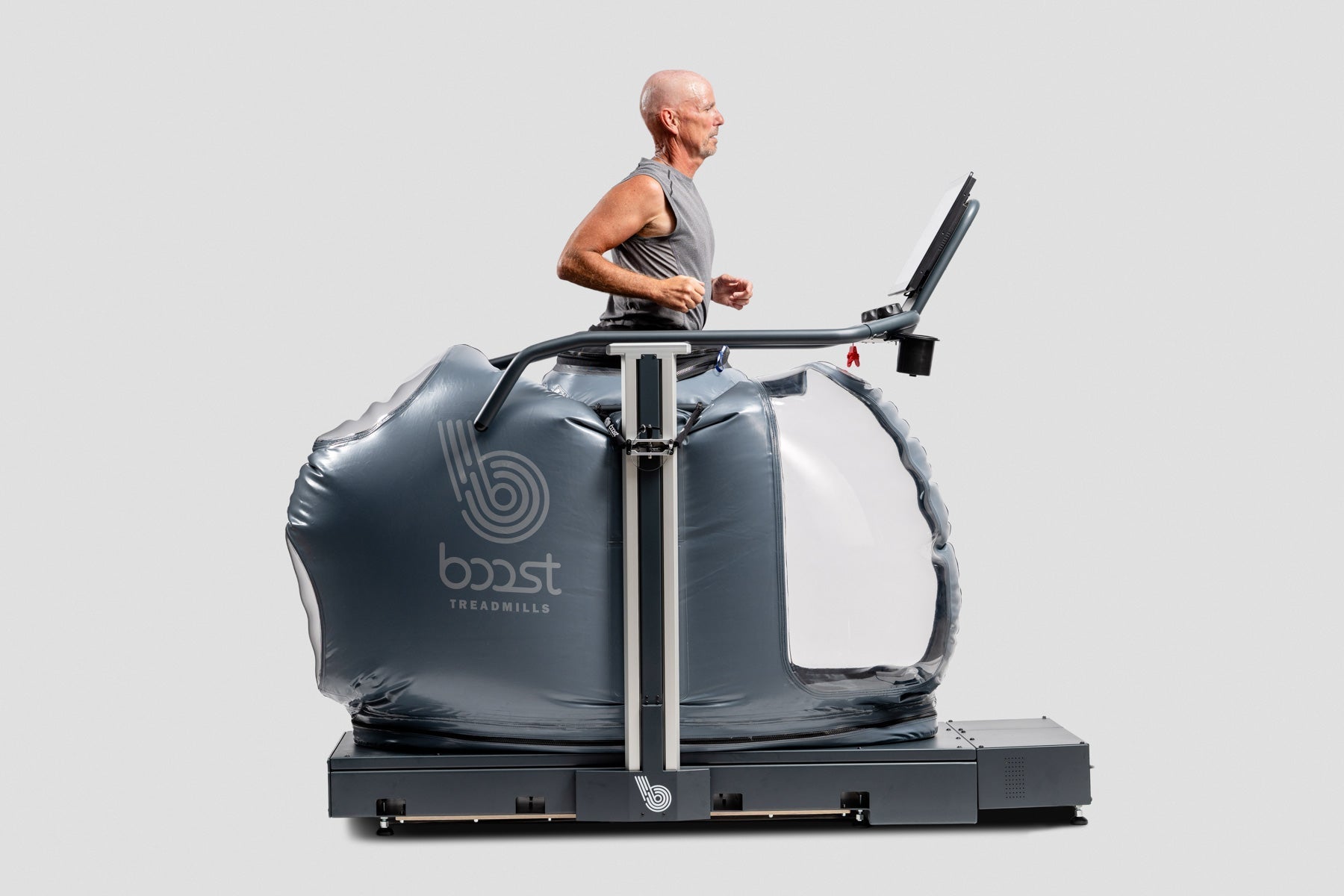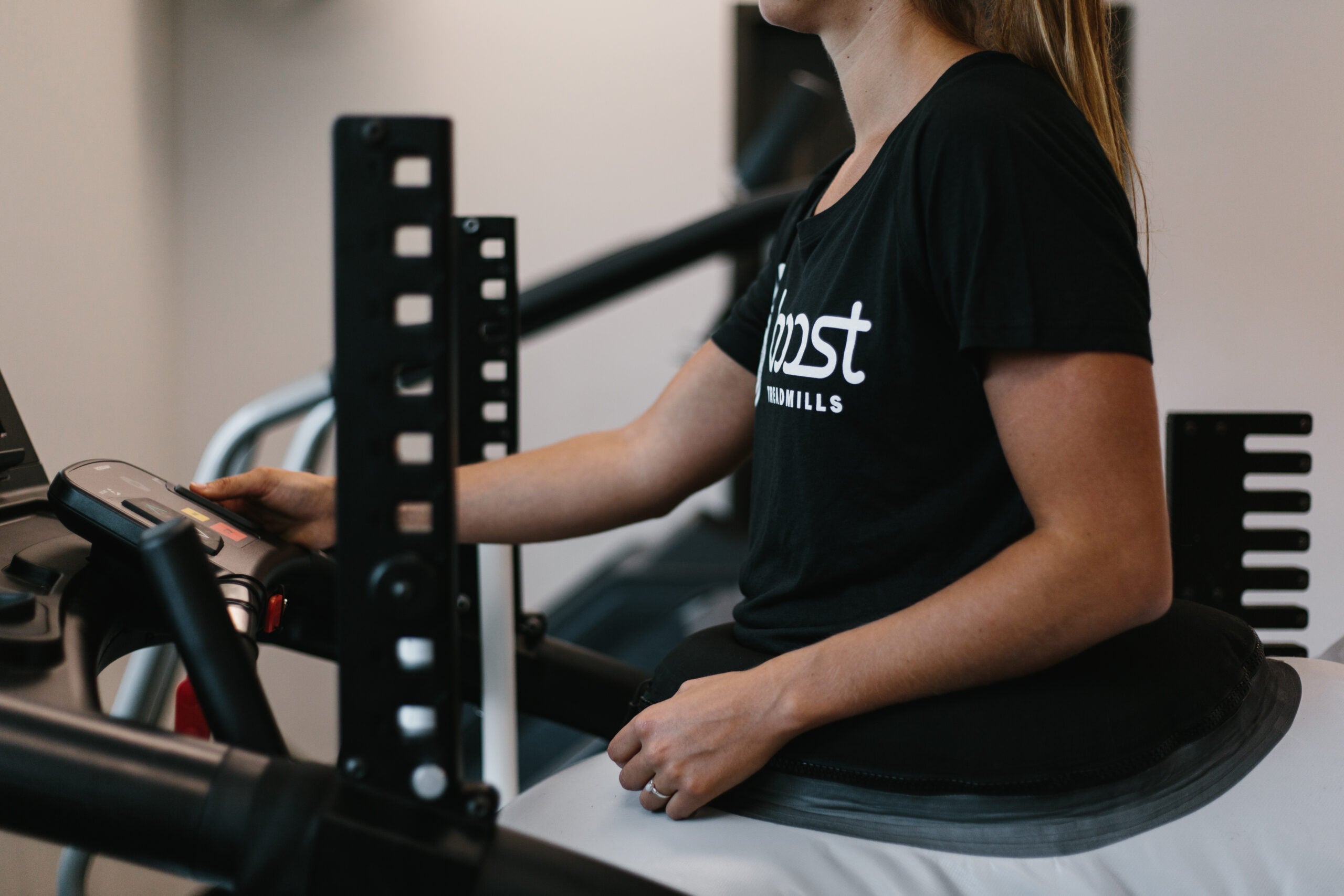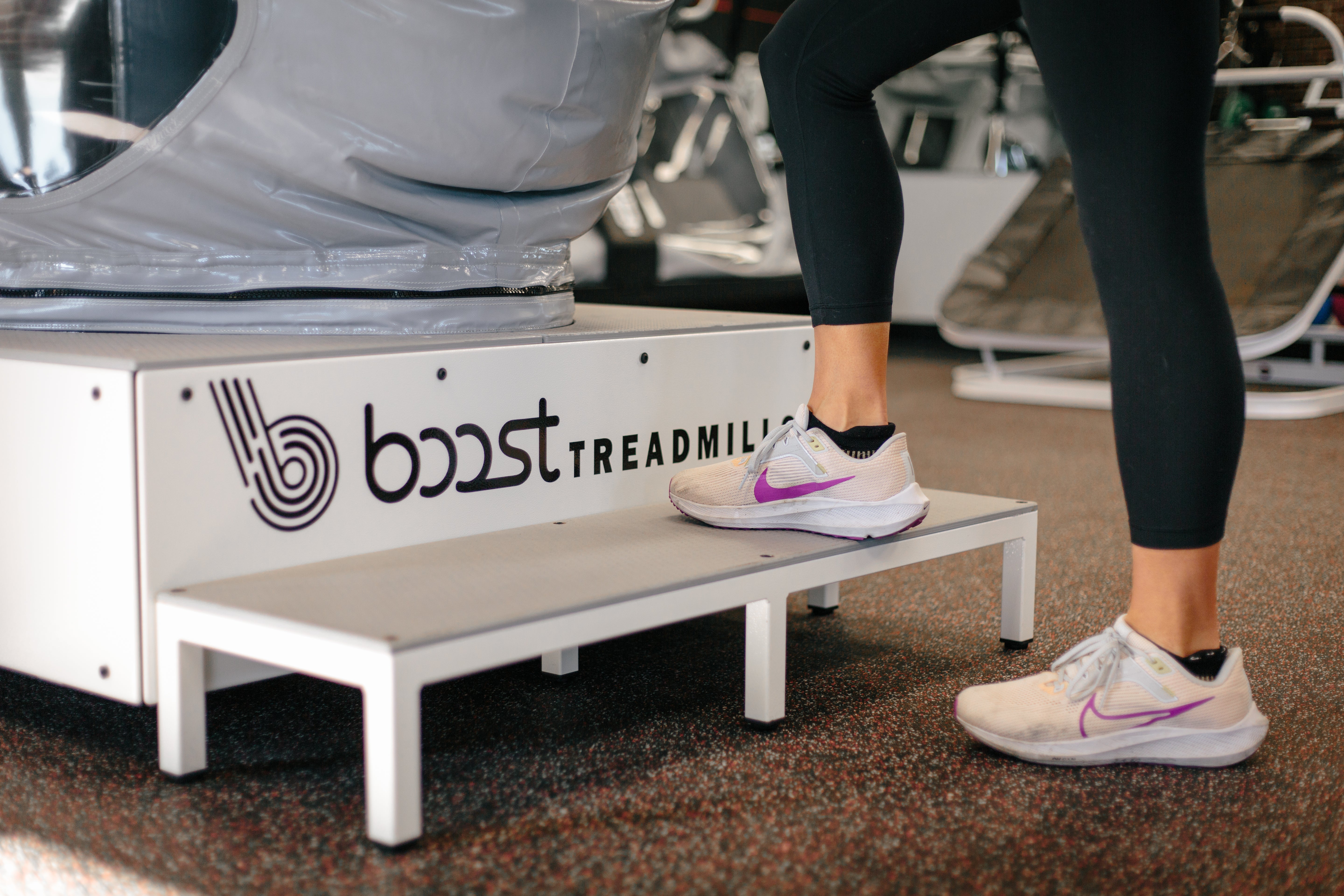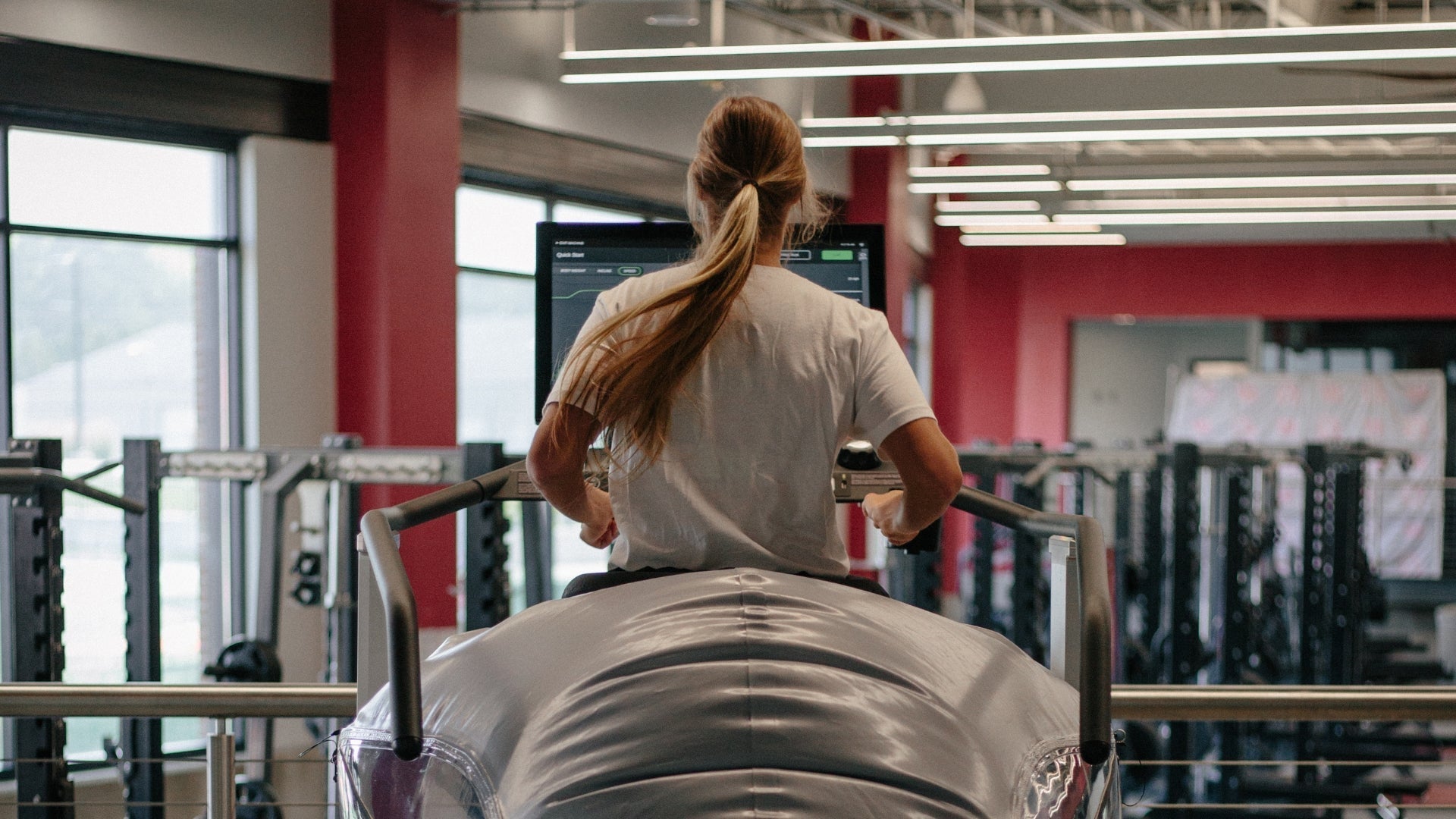A comprehensive look at how the Boost Treadmill can play a key role in cross country and track training, rehabilitation, and return to overground running.

It is no question that running is a physically and mentally demanding sport, requiring lots of time on your feet and thus a lot of stress on the body. Whether it’s at the high school, collegiate, professional, or recreational level, microgravity treadmills can be a valuable tool for training, rehabilitation from injury, and returning to overground running.
Training
There are several different aspects of cross country and track training that can also be performed on the Boost to enhance the workout while reducing the risk for injury, including interval training, speed work, hill training, endurance runs, and even recovery runs.
When intervals, speed work, or hills are performed on the Boost, the runner has the ability to make small changes to their body weight percentage in order to reach higher speeds than they might normally be capable of on the ground. This is known as overspeed training, and can be extremely beneficial in promoting neuromuscular efficiency to improve overall performance.
Endurance runs involve a lot of time on your feet, and can significantly increase injury risk especially when done on hard surfaces such as pavement or concrete. Performing endurance runs on the Boost can be extremely beneficial in preventing injury by reducing impact on bones and joints through both the air pressure technology as well as the Woodway® shock-absorbing slat belt technology. On the same token, recovery runs can also be done on the Boost with the same goal of reducing injury risk and giving the bones and joints a rest after hard workouts or training blocks. This allows athletes to increase their overall volume without the additional stress on the body and build up strength over time to be able to do more.
Rehabilitation
Microgravity treadmills are not only a valuable tool for training, but also for rehabilitation from injury. The air pressure technology reduces the amount of weight the runner puts on their injured limb, allowing them to run without putting as much strain on the injured area.
For example, if a runner has a knee injury, they can use the Boost to gradually increase their running speed and distance while simultaneously reducing the amount of weight they put on their injured knee. This allows them to maintain their fitness level and improve their running ability while they recover.
Returning to Overground Running
Once a runner has recovered from injury, they may need to transition from using a microgravity treadmill to running on the ground. This transition should be gradual to prevent re-injury. Initially, the athlete may start by alternating between running on the Boost and running on the ground. As they become more comfortable running on the ground, they can gradually increase the amount of time they spend doing so and decrease the amount of time they spend running on the microgravity treadmill.
Microgravity treadmills are quickly becoming a staple in many collegiate, professional, and even high school programs as more and more coaches and athletes realize the benefits they provide for training, rehabilitation, and return to sport.








Unlock More Power: Overspeed Training on the Boost
Your Clinic & The Boost: Taking Physical Therapy to the Next Level